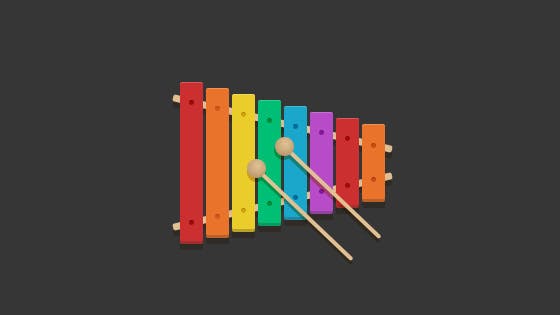“Are you talking to your customers or at them?”— John Tackett
Many ‘conversations’ companies have with customers tend to feel like aggressive, boastful monologues, with the company at the podium and the customer patiently sitting in their seat, glazed expression covering their face.
Other forms of communication simply lack personality. It’s hard for upstart companies to build a brand people love when their foundation is bland, boring messaging.
Since so much of your interaction with customers online will be through words alone, taking on a customer service tone is a way add some personality to your messages.
Think of it as a way of speaking that shows the recipient that they are more than just a number to you, and that behind that screen, you’re a real person, too.
The Customer Service Tone in Action
Email copywriting has all of the hallmarks of classic direct response mailings. It’s the channel of choice for marketers who want to make sales, not #hashtags.
It could be interesting, then, to test whether or not a “customer service tone” might work with a channel that usually allows fairly aggressive pitches and selling. That’s what Active Network, a large event management software provider, did in an exceptional case study posted on MarketingExperiments.
They wanted to know how they could improve total lead inquiries from prospects who abandoned the free trial sign-up process. They saw this as a big leak for the company, and they recognized the opportunity to improve with their follow-up broadcasts.
The test, unsurprisingly, consisted of a change in tone that put the following two conversational styles against each other:
- Treatment #1: “Prospects who abandoned the free trial sign-up were sent an email that focused on the value of the software.”
- Treatment #2: “Prospects are engaged by addressing the elements of anxiety, or what lead them to abandon the sign-up process.”
In other words, the second treatment had a “customer service tone”—focusing on “What didn’t you like, what can we help you with?” over a more traditional sales pitch. Frankly, the results of the test surprised me:
“The direct response tone in Treatment #1 gives you a good reason to start now and the second one is a helpful tone that’s focused on reducing your anxiety,” Flint said. The marketers at Active Network saw a 349% increase in lead inquiry rate by addressing customer anxiety through the tone of the email copy.
Image Sources: MarketingExperiments.com
While you shouldn’t throw away your copy of Breakthrough Advertising anytime soon, it’s certainly interesting to see how an email that eschewed hard selling in favor of a personal, helpful style could perform this well.
The success of this test lead me to look into other ways this casual customer service tone might be used in communicating with customers.
Think about the companies you love to interact with—there’s a good chance they’re putting this conversation style to use already.
Talking to Customers with Your Product
As I mentioned above, there is much more to the customer service tone than winback emails.
Because you are constantly “talking” to customers via your product—especially if you’re in the SaaS industry—fun, inviting copywriting can help to create that casual tone that engages customers.
As much as I love my current email marketing provider, I have to tip my hat to Mailchimp for some of the best use ofvoice and tone in their communications with customers. It’s far better than any of their competitors.
Common actions, like sending an email broadcast, greet users with visuals and copy that are quirky and memorable:
It makes hitting that “send broadcast” button feel really good—certainly much more endearing than the lackluster “You have sent a broadcast,” which is present in most alternatives.
Those often remind me of the episode from The Office with Dwight Schrute’s classic “It is your birthday” banner, because they are just as boring.
It’s not that customers want cutesy copy. Trying to be too clever when you need to be clear is a copywriting sin, but there are times when clever wins the day.
Moments like the one above—a common screen that only Mailchimp users will see and that won’t affect their usage of the product—are prime candidates for implementing the “customer service tone.”
Is it any wonder that Mailchimp customers love the company’s selective use of clever? The “High Five” example is also brilliant because it creates an opportunity to share the experience.
I don’t know about you all, but I always high-five the monkey hand after I send a #marketing #email through @Mailchimp. Rock on.
— Jason Ballmann (@jasonballmann) August 21, 2013
This is what marketer Steve Woodruff would call a “memory dart,” or the use of copy with the sole intention of sticking out in customers’ minds.
Substituting memorable for the mundane is often quite easy in instances of everyday product use. As long as it’s obvious to customers in terms of “what happened” or “what will happen,” humor and creativity should be embraced
It makes sense to consider workflow when implementing messaging like this. We know that our customers are regularly faced with a full queue of support questions, so if they manage to clear out an inbox, we like to celebrate a little with them.
Tons of inspiration for messaging like this can be found on the site Little Big Details. Pay attention to the goal of each, as they are often more thought out than you think.
This message, again from Mailchimp, adds a bit of humor to diffuse a slightly annoying outcome—a customer just found out their desired username is unavailable.
This is Sleepbot’s way of calling you out for not using the app. It’s a “We missed you!” message that doesn’t blend into the crowd.
If you make a mistake when entering a date, Hipmunk takes a playful jab by reminding you that they can’t send you back into the past.
Where Creativity Meets Conversions
The best of both worlds happens when creative communication is used to increase usability and conversions.
One of the best examples I’ve come across is from Ramit Sethi, who relies heavily on his email list to sell his online courses. When you sign-up for Ramit’s newsletter, you’re not greeted with a boring “Please confirm your email” page, you’re hit square in the face with some personality:
You take notice right away because it’s not something you’re used to seeing, but then Ramit intelligently guides your attention to what you should do next.
A countdown on the side denotes that you should act immediately to confirm your email, and the copy explains concisely why Ramit’s newsletter is worth receiving in your inbox.
This is a use of the customer service tone to differentiate oneself and qualify prospects, all in one fell swoop. You know immediately that this newsletter will be an honest, casual take on personal finance.
It’s a branding play and a conversion technique all rolled into one, and it’s an exceptional use of a humor-laden tone that correctly uses creativity to catch and guide one’s attention.
Where Can You Put This into Place?
The biggest takeaway for this article is simply awareness—hopefully the examples above have started the gears turning in your head as to where a customer service tone might be applied in your own communications with customers.
Think about key touch points where your messaging is “me, too” or simply boring.
One example that I’ve always found lackluster is your typical eCommerce ‘order confirmation’ pages.
Rarely have I ever been “wowed” by a Thank You page from most eCommerce sites. I just spent money with you, and yet most of the time I’m greeted with a dry “Your purchase is complete.” Where’s the love?
That’s a touchpoint where a little personaliztion and a customer service tone can go a very long way.
Where might you be able to use this tone to better connect with customers?






